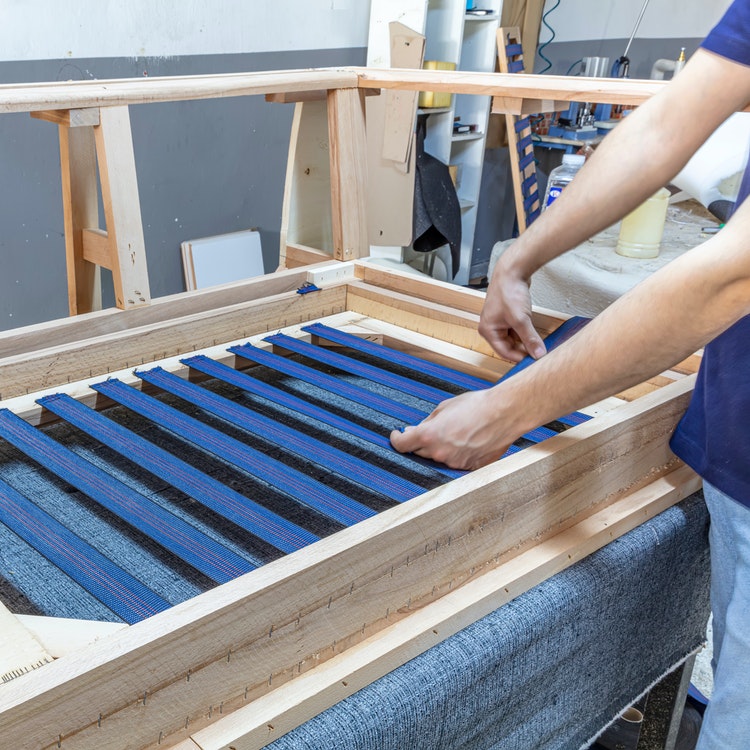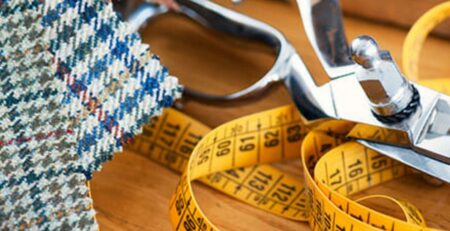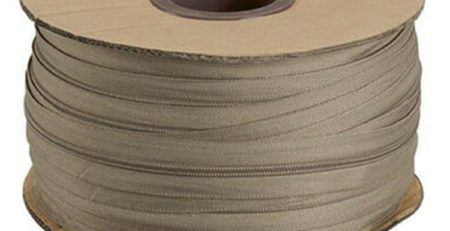Buying upholstery webbing
Selecting the most suitable upholstery webbing involves choosing the correct type of fabric that will support the coil springs that are on chairs or couches. Upholstery webbing gives furniture its strength, rigidity and form. There are five types of webbing for furniture: jute English nylon, nylon and rubber. The material used determines the upholstery webbing is priced in accordance with the gauge size, width, stretch, and the number of strands. When choosing the most suitable fabric for upholstery, the primary factor to consider is the kind of furniture to be upholstered. Because various types of webbing work best for certain furniture pieces or for particular reasons.
Jute, made out of plant fibers. It is the earliest and the most popular type of webbing for upholstery. The highest quality jute is available on a roll by red stripes. A black stripe on webbing made of jute indicates that the material is inferior quality.
The highest-quality, heavy-weight jute can be used to give support to the part of furniture that must support the greatest weight that is the seat. Jute of lesser quality is a good option to support the rear. Jute webbing, as opposed to modern webbing is the sole type of material that is suitable to use for a traditional piece of furniture. It is durable and strong. The only drawback is that its fibers will begin to decay with time. So, jute webbing shouldn’t be used to reupholster furniture outdoors.
Jute gauges are measured in accordance with colonial British measurements. For instance, a roll of 9 pounds (4.1-kg) Jute weighs 9 pounds for 144 yards (131.7 meters). The jute gauge is suitable for the arms and back of a chair, however in a chair that has to support the weight of three or more individuals, the majority of upholsterers recommend that you use a minimum of 11 pounds (5-kg) webbing of jute.
English webbing also referred to as black-and-white is weaved in herringbone pattern. It is the best quality webbing that is an ideal alternative to jute for making upholstery for antique furniture. The most durable English webbing is made entirely from flax. The lower-grade versions contain a small amount of hemp, cotton or linen, and aren’t as durable. English webbing typically comes in sizes in the range of two inches (5.1 cm) and weighs about 11 pounds (5 kg) per gross.
Man-made webbing is typically used to make low-cost and modern chairs and couches. While nylon webbing is a bit thinner than Jute webbing, both are able to provide coil springs with the same amount of support in the seating space. In between webbings, nylon is the best choice for upholstery of contemporary or outdoor furnishings. In contrast to jute and nylon the nylon upholstery is exactly the identical, and therefore it is not sold in weight. Polyester webbing can also be utilized in lieu of nylon or jute however since it’s an newest version of the market for upholstery and has been utilized more rarely.
It is possible to use rubber webbing with no coil springs. Elasticized webbing is more affordable to employ than springs, and offers greater flexibility in the design of frames. Contrary to the furniture made by the United States, most European and Scandinavian furniture has suspension systems using rubber webbing.
There are numerous advantages for the use of rubber upholstery webbing. It is a suspension device, it is a great alternative to traditional hardware, gives an extremely solid foundation for support and minimizes the noise that coil springs generate. Webbing made of rubber is sold according to stretch and the number of strands, based on the degree of bounce or firmness you want on a couch or chair.
Traditional furniture has webbing is typically connected to the edges pieces. Modern furniture made using staples and tacks usually does not have the strength to hold the webbing in position. To correct this issue webbing must be affixed to the sides, not the ends of the furniture pieces which are being replaced.
Traditional webbing materials, such as Jute or English webbing shouldn’t be used on modern sofas and chairs, the same because it’s not appropriate to apply synthetic webbing to furniture made of antique or fine materials. If in doubt, many upholstery experts would suggest to replace the existing furniture. Throwing an upholstery tool on the top of a web is the ultimate test of upholstery webbing. The most effective webbing will throw it right back.





